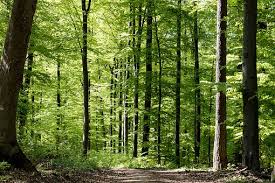Geographers divide the earth in several different ways. One of the main methods to divide the earth is by dividing it into bands that are parallel to the equator. These various bands help to describe the climate of the regions of the earth. The farther a place is from the equator, it will be colder in the climate. Actually, we can divide the regions of Earth that can be divided into zones based on their proximity to the equator. These are tropical zone, temperate zone, and polar zones.

Parallels of Latitude
Parallels of latitude run from zero degrees at the equator to 90 degrees at the North Pole and 90 degrees at the South Pole. Degrees of latitude increase as we move away from the equator and toward the poles.
The temperate zone lies in the middle latitudes. Latitude is the main factor in classifying zones because it correlates to the amount of sunlight an area receives.
Climate Zones
Wladimir Koppen has identified and defined the various climate zones of Earth. These are tropical, dry, temperate, continental, polar and highland. Climate zones are classified based on the average temperature, amount of rainfall and type of climate they have.
Latitude, elevation and the presence of nearby mountains or large water bodies help to determine the climate zone. This is because of their effects on weather patterns.
Temperate Zones
The temperate zone mainly lies between the tropics and the Polar Regions. It experiences a wide range of temperatures and precipitation where four distinct seasons are common. Every continent but except Antarctica has at least a small portion of land in the temperate zone.
Regions that are covered exclusively in the temperate zone include the continental U.S., most of Canada and Europe, Central Asia, southern South America, and southern Australia.
Temperate regions are found between the Tropic of Cancer and Tropic of Capricorn. It generally having has four different seasons such as spring, summer, autumn, and winter.
The most popular climate to live in as it does not experience the wide variations of some of the more extreme climates. The ability to grow a large variety of crops and fruit is a major source of income in these regions. Grain crops such as wheat, barley, and oats are very much produced.
Pears, apples, strawberries and other soft fruit are grown to consume as well as sell. Deciduous trees in many different areas are giving way to coniferous trees. In these areas, the temperatures are lower for example in hilly or mountainous regions.
Some Characteristics based on various parameters are as follows
Area: Lies between the cold zone and the subtropical zone (40° to 60°)
Sun path: Maximum is 73°, the minimum is 0° at the Arctic Circle.
Average temperature: Between zero and 20°C
Minimal temperature: -40°C
Maximal temperature: +40°C
Radiation: The balance is negative
Day length: 4 to 16 hours and 8 to 12 hours at 50°N
Precipitation: Varies from 300 to 2000 mm, on the average 800 mm.
Climate: Warm and cold temperate
Vegetation: Deciduous forests, warm temperate forests, savannah
Properties: Extreme temperature and precipitation is rare
Britain: A case study of Temperate Zone
Britain is a good and balanced example as a country with a maritime temperate climate. Here the summer temperatures are generally cooler than further into Europe. This is due to the fact that the sea has a moderating effect, which keeps the land cooler in summer and warmer in winter.
Although, Britain does experience very changeable weather so accurate weather forecasting is difficult to achieve.
Rain often comes in the form of storms that develop in the North Atlantic and blow across Britain from west to east at all times of the year. Even in such small Island weather and up to some extent the climate, differs from north to south and east to west.
Mountainous areas get much more rain than the lowlands and this has a large effect on what can be grown. Lowland areas generally tend to be warmer and more suitable for large-scale agriculture.
Solved Questions on Temperate Zone
Q: What is the difference between the Torrid Zone and temperate zone?
Ans: The Torrid Zone is the heatest zone on the earth as compared to the temperate zone. The Torrid Zone lies between tropics of Cancer & Capricorn, whereas the temperate zone has been divided into two, the North Temperate Zone which lies between tropic of cancer & Arctic Circle, the South Temperate Zone lies between the tropic of Capricorn & Antarctic Circle.






jljkl